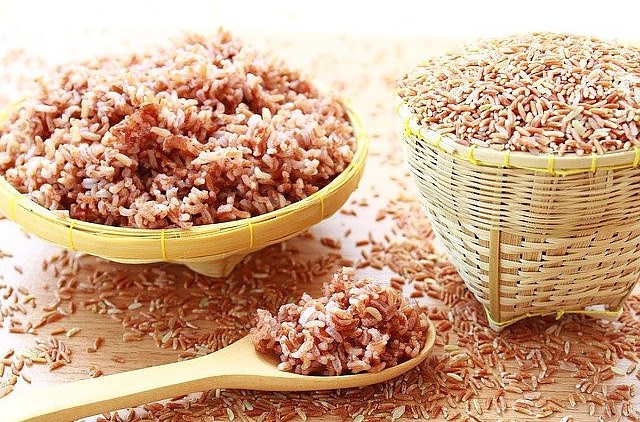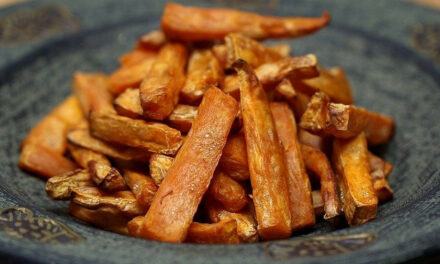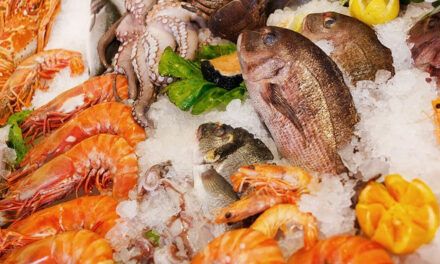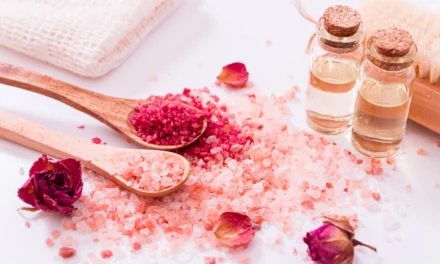This article contains information about rice, types of rice, types of rice safe to eat, and one of the healthiest rice, red rice. In this guide, we also cover the history of red rice, types of red rice, its nutritional profile, the difference between red rice and other types of rice, health benefits of red rice, red rice effect on diabetes, what research says about red rice effect on diabetes, when should not a diabetic consume red rice, when should a diabetic consume red rice, how much red rice a diabetic can consume, how diabetic should cook red rice, what is the best meal to have red rice for diabetics, red rice effect on diabetic medication, alternative grains for diabetics…etc.
Let’s start rolling…
What is Rice?
Rice is a type of grain. They are edible seeds grown and harvested to be consumed by humans as well as animals. Rice is rich in carbohydrate and contains many essential vitamins and mineral such as Vitamins B3 (Niacin), B1 (Thiamine), B5 (Pantothenic acid), Iron, Manganese, Copper, Folate and Selenium.
Most common types of rice are Oryza sativa (Asian rice) and Oryza glabberima (African rice).
Types of Rice
Basmati rice
This, aromatic rice is mainly cultivated in the foothills of Pakistan and India. The quality of fragrance of aromatic rice can differ from a year’s to the next, and more the age better the fragrance.
Jasmine rice
Another fragrant rice, despite the fact that its flavor is marginally less articulated than basmati.
The history of Jasmine rice begins from Thailand.
The length and thinness of the grains recommend that they ought to stay separate on cooking; however; it contrasts from other long-grain rice in that it has a delicate and marginally tacky surface when cooked.
This rice is great with Chinese and South-East Asian food.
Brown rice (or wholegrain) long-grain rice
This rice has a particularly nutty flavor. Earthy colored rice goes through just insignificant processing, which eliminates the husk yet holds the wheat layer. Because of this, the rice holds more nutrient, mineral and fiber content than standard or simple cook white rice.
The grains stay separate when cooked, as long grain white, yet take more time to relax. The cooked grains have a chewy surface, which numerous individuals appreciate. It is likewise accessible in simple cook structure.
Arborio rice
Named after the town in Piedmont, Italy, Arborio grains are oval fit as a fiddle and smooth white. The grains have a high amylose content, which means they discharge extensive starch during cooking, making the trademark smoothness ideal for risotto.
Japonica rice
It is a short and medium grain, and filled mostly in California. It arrives in an assortment of shadings including red, brown and black.
It’s utilized in Japanese and Caribbean foods because of its trademark tenacious sodden and firm nature when cooked.
Carolina rice
Carolina rice assortments are filled in the three most significant creation areas of Portugal.
Carolina rice stays firm and delicate when cooked, retains flavors and shadings, and makes a velvety sauce, making it ideal for the arrangement of stews, tomato-based and fish dishes that are common of Portuguese food.
Bomba or Valencia rice
Bomba rice is filled in various districts of Spain, for the most part in Valencia and Delta del Ebro.
Bomba can assimilate multiple times its volume in fluid, yet extends just in width and not long. These qualities make it especially appropriate for rice dishes, for example, paella, however, it is additionally generally utilized in soups.
Carnaroli
Filled in northern Italy, carnaroli is portrayed by a higher starch content and firmer grain. Carnaroli is the best option for some Italians while planning risotto. It’s especially high amylose content keeps up its shape, while giving the trademark rich smoothness related to risotto.
Tip: Have you heard about cauliflower rice? We covered that too!
Which Rice is Safe to Eat?
I would say the below 4 are mainstream go-to rice options safe to eat.
- Basmati rice
- Brown rice
- Wild rice
- Red rice
Which Rice is the Healthiest Rice?
Black Rice
The darker the rice, the more nutritionally dense it is. While it’s called dark rice, its tone is, in reality, more purple than dark. The dim tone is a marker of its very high cell reinforcement properties, which is the reason dark rice comes in at number one.
The profound rich tone is created by a cell reinforcement called anthocyanin, which is additionally found in blueberries and blackberries. Anthocyanin can confine free revolutionaries, which have been ascribed to a reason for coronary illness, diabetes, and even malignant growth.
The counter oxidant substance of dark rice is multiple times higher than some other grain, and it decreases aggravation in the body in a way that is better than some other kind of rice.
The principle calming constituent in dark rice is called C3G, which examination shows may help battle infections like joint inflammation, diabetes, coronary illness and diseases.
In case you’re worried about your weight, dark rice is the most ideal choice. It’s stuffed with nutrients, minerals, and fiber. Dark rice causes you to feel full, in this way it forestalls gorging.
Dark rice can help forestall insulin resistance, which is regularly connected to the danger of creating diabetes and weight.
Other healthiest rice also includes:
- Wild Rice,
- Brown Rice,
- Red Rice,
- Basmati Rice,
- Jasmine Rice,
- Arborio Rice, and
- White Rice.
Now let’s focus on red rice.
What is Red Rice?
Red rice is an assortment of rice that is hued red by its anthocyanin content. It is generally eaten unhulled or incompletely hulled, and has a red husk, instead of the more normal earthy colored.
This rice has a nutty flavor. Contrasted with cleaned rice, it has the most elevated healthy benefit of rice eaten with the germ flawless.
History of Red Rice
Both japonica-type and indica-type red rice have been developed in Japan. The japonica red rice is ventured to have been acquainted with Japan from the Asian Continent in antiquated occasions alongside white rice. Some wooden tablets exhumed from court ruins and chronicled archives show the development of red rice over Japan during the 17th and 18th century.
The red rice of indica-type, named ‘Taitoumai”, was presented from China during the 14th and 15th
century (the medieval ages).
The long-grain sort of red rice had been developed widely in the focal and southwestern piece of Japan for its initial maturing, dry spell obstruction, creepy-crawly opposition and high return however its taste was mediocre. It involved the maximal development territory during the 16th and 18th
century (the Edo period). A
round the later 50% of the 19th century (the Meiji time) these two sorts of red rice were step by step disposed of and vanished at last from the paddy field in Japan.
Types of Red Rice and Their Glycemic Index
1. Thai Red Cargo Rice
This rice has more characteristics like that of brown rice than of the unmistakable red rice assortments. They are non-glutinous rice that have a more expanded grain size.
This rice additionally happens in entrancing red, purple, and maroon tones. This rice is a famous decision in more Thai dishes far and wide.
At the point when cooked, they have a nutty and sweet flavor bed. Like most sorts of red rice, they have a chewy surface.
This rice was regularly traded or dispatched utilizing load vehicles and never stuffed and sold in little units. This is the explanation they got the name “Cargo”.
2. Kerala Matta Rice
The Kerala matta additionally called the Palakkadan Matta Rice, or Kerala Red Rice is the particular unattractive kind of this seaside state. The rice is known for its well being add-on and renowned since they mix well with all dishes of the nearby foods.
They turned into a well-known decision in this piece of the nation since the hour of the Chola Kings. They were likewise transformed into rice powders and used to make a portion of the extraordinary flavorful dishes.
Thinking back to the 1960s, these kinds of red rice just took into account the sovereignties.
This rice has an interesting taste and is wealthy in sustenance.
The coarse rice is said to have better degrees of cell reinforcements, minerals, and fiber content when contrasted with different assortments in the zone.
3. Bhutanese Red Rice
This rice is just accessible for its nearness to the nation of origin of Bhutan.
Burma red rice is halfway processed rice that has a brilliant red tone.
This one of a kind sort of the rice permits it to cook a lot quicker when contrasted with the other red rice assortments. When completely cooked flawlessly, this rice has a shallow pale tone. While the greater part of the red rice in the market is chewy in nature, this is one of the red rice that has a tackier surface.
This rice is additionally the lone import from the farming division of Bhutan.
Red rice has a low Glycemic Index and is known to be a good healthy alternative. It has Glycemic Index of 55, which is a better and healthy option for Diabetics.
Red Rice Nutritional Profile
- Iron (68.75%)
- Carbohydrate (66.69%)
- Zinc (30%)
- Protein (14%)
- Fat (14%)
- Fiber (7.11%)
- Potassium (5.45%)
How Red Rice is Different from Other Types?
White rice has a higher glycemic index which implies your body separates white rice all the more rapidly. White rice is additionally lower in fiber – fiber is significant for gut well being and keeping you feeling full for longer.
Earthy colored rice has the external structure eliminated however it actually has the wheat layer and the germ. This means there is much more supplements which are still left in the rice. Brown rice, like white, has distinctive grain lengths – short, medium and long.
Earthy colored rice is a decent wellspring of magnesium, press and can be a decent wellspring of zinc. It likewise contains more fiber contrasted with white rice.
Black rice has an unmistakable nutty, natural flavor and takes any longer to cook than white rice. Black rice additionally has a lower glycemic list, so it implies in the event that you have diabetes it will be very acceptable as its moderate releasing .Black rice is likewise high in fiber, it has 4.7 grams per 100 grams.
Red rice is diverse in light of the fact that it contains mixes called anthocyanin. Red rice has pretty comparative calorie substance to different rice – for 100 grams of uncooked red rice, there are 360 calories. Fiber content is a lot higher at 6.2 grams per 100 grams.
Health Benefits of Red Rice
It is a fiber rich substance, with plenty of vitamin B1 and B2, iron and calcium. As a result of higher nutritive substance and well being preferences of red rice, it is firmly prompted for heart patients just as diabetics.
Also, it is cherished by well being masters just as wellness devotees since it’s high fiber content aides put on less weight. By devouring red rice, you can get the accompanying nourishment and furthermore well being points of interest.
Here are the other benefits of red rice…
- Contains antioxidants to counteract free radicals
- Rich in vitamin B6
- Helps lower high cholesterol
- Help prevent heart disease
- Lowers blood glucose
- Lowers the risk of obesity
- Helps in fighting asthma
- It’s fortified with powerful antioxidants
- Good for your bone health
- Rich in fiber
- Rich in Iron
Effects of Red Rice on Diabetes
Diabetes is a genuine condition that causes higher than typical glucose levels. Diabetes happens when your body can’t make or viably utilize its own insulin, a chemical made by uncommon cells in the pancreas called islets (eye-lets).
Insulin plays a role as a “key” to open your cells, to permit the sugar (glucose) to enter them, once they converted from the food you eat. At that point, your body utilizes that glucose for energy.
In any case, with diabetes, a few significant things can turn out badly to cause diabetes. Type 1 and type 2 diabetes are the most well-known types of sickness, yet there are additionally different sorts, for example, gestational diabetes, which happens during pregnancy, just as different structures.
Red rice helps in controlling the insulin level. The low glycemic list of red rice helps in controlling the sugar level and is useful for diabetic patients. Aside from that, there are a couple of all the more regular fixings, which help in keeping the sugar level adjusted.
What Does Research Say About Red Rice Effects on Diabetes?
Individuals with diabetes can burn-through rice in little amounts. Keeping a decent eating routine is critical.
On the off chance that you have prediabetes, you ought to likewise watch your intake of rice and attempt to keep a solid eating routine and exercise consistently.
Individuals with diabetes can include rice as a component of a healthy eating routine. However, they ought to:
- Eat rice with some restraint, and be careful that 1 cup of rice contains 45 g of carbs.
- Spread their eating of rice and other carbs equitably for the duration of the day.
- Pick an assortment of rice that is low in carbs and has a low GI score.
- Consider any sauces and different backups that may contain added sugar or carbs.
- Examine explicit individual sugar needs with a specialist or dietitian.
When Should Not a Diabetic Eat Red Rice?
There are dangers to having a lot of rice in your eating regimen.
A study in the British Medical Journal found that individuals who eat significant levels of white rice may have an expanded danger of creating type 2 diabetes. This implies that in the event that you have prediabetes, you ought to be particularly upright about your rice consumption.
On the off chance that you’ve just been determined to have diabetes, it’s, for the most part, alright for you to appreciate rice with some restraint. Ensure you’re mindful of the starch tally and GI score for the kind of rice you wish to eat.
You should plan to eat somewhere in the range of 45 and 60 grams of starches for every dinner. A few assortments of rice have a lower GI score than others.
The Create Your Plate technique utilized by the U.S. Division of Agriculture is a decent method to guarantee your dinners are parceled well. Your supper plate ought to have 25 per cent protein, 25 per cent grains and dull nourishment, and 50% non-boring vegetables.
You can likewise incorporate a serving of organic product or dairy as an afterthought, yet you should consider them your dinner in case you’re checking starches.
When Should a Diabetic Consume Red Rice?
Compared with white rice, red rice is exceptionally recommended for diabetics – because of their low glycemic record. These are seen as whole grains, which can help in decreasing the vein plaque, forestall dangers of cardiovascular illnesses, elevated cholesterol and direct glucose.
Be that as it may, eat less rice in general for glucose control.
How Much Red Rice a Diabetic Can Consume?
Early-stage diabetics should eat red rice in small servings. People with also high blood sugar should eat even less than a diabetic, only 100 to 150 grams per day. However, the best option is to seek Dietitians advice on your eating, before making considerable changes to what you eat.
Should You Eat Red Rice Daily?
Although medical professionals suggest including red rice in your diet, you should not go overboard with consumption. You may consume it daily but with small servings, 200 to 250 grams approximately if you do not have diabetes or you are overweight.
As said above, red rice is rich in manganese and antioxidants, and hence, is highly recommended for patients with diabetes.
How Diabetic Should Cook Red Rice?
Drench the red rice for an hour in an enormous bowl prior to cooking. This progression will basically assist you with disposing of the residue, soil, and so on, then add water in the proportion of 1:4 (4 cups of water for one cup of rice) and let it boil.
When the water boils, add the red rice and cook for 20 minutes on low flame and incompletely cover the mouth of the vessel with a plate.
When cooked, empty out the water and red rice is prepared for utilization.
Moreover, red rice takes altogether require longer cooking time compared with white rice. For example, to cook one cup of red rice, over 2 cups of water is required and the process would take around 40 minutes for it to cook totally.
Other recipes go together with red or brown rice in our everyday diet include serving of mixed greens. Red rice can be eaten in kheer too. It very well may be utilized on the customary reason for idli, appam and dosa. The gritty kind of red matta rice likewise goes well with sheep, hamburger or goat meats.
I hope by now you realize what and how to add red rice to your menu to change up your eating routine! Red rice is an incredible method to begin settling on better decisions.
What Is The Best Meal To Have Red Rice for Diabetics?
Red Rice can be eaten by the diabetics for breakfast as well as lunch, as it gives body more time throughout the day to digest it and keep you healthy.
How Red Rice Effect Diabetic Medication?
Red rice is recommended for diabetics as it is rich in vitamins and minerals as compared to other rice, as it is recommended option one would probably think that it has a very low effect on diabetic medication. However, as noted earlier, one with diabetes should consume red rice by gaining approval by their health professional (i.e. dietitian) first.
What Are The Alternative Grains Diabetics Can Eat?
Yes, there are plenty.
- Rolled and steel-cut oats
- Barley
- Bulgur
- Quinoa
- Millet
- Buckwheat
Conclusions
Red rice may uphold heart well being and diminish cholesterol levels, aggravation, malignancy cell development and danger variables of metabolic condition. It can help to resolve gastrointestinal issues, unfavorably susceptible responses, liver poisonousness and muscle issues.
Red rice is a preferable a healthy choice to be added in your diet and a better one for a diabetic, but one should discuss it with their recommended doctor or nutritionist before adding in your diet. Generally speaking, I would recommend adding red rice in your diet as it has many health benefits and is a safer option than other types of rice.














